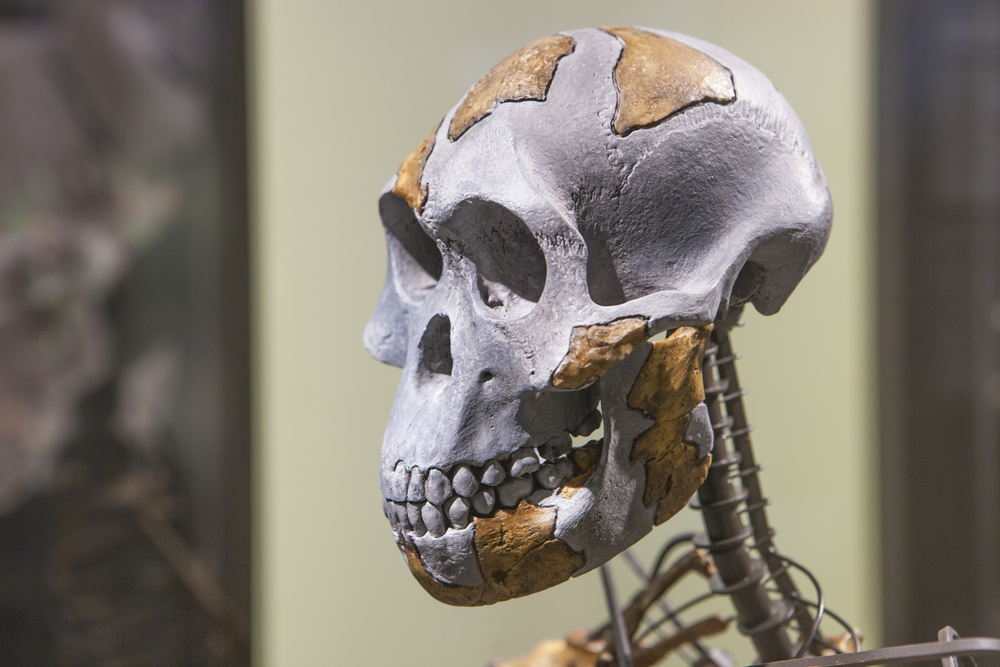8 Things We’ve Learned Since Lucy’s Discovery 50 Years Ago
Posted on Categories Discover Magazine

On November 24, 1974, Donald Johanson and Tom Gray were riding in a Land Rover on the hunt for bones. It was hot and dry, and the two were tired from a long day of excavating fossils. As they coasted through a dusty gully, having taken a different route than normal, Johanson spotted the forearm bone of a hominid poking out from beneath the dirt.
Uncovering the ulna would lead to 47 other bones, including a skull bone, femur, ribs, pelvis, and the lower jaw, all of them belonging to a young adult female. She would quickly acquire the name Lucy after the Beatles song that played at the raucous campfire party celebrating her discovery.
Lucy is arguably the most important paleontological discovery ever made, and it’s expanded our understanding of early humans in a way that few discoveries ever could. The finding has allowed us to delve much deeper into what it means to be human, and we’ve learned a great deal since then.
1. The World When Lucy Was Alive
Lucy lived around 3.18 million years ago during a time when Ethiopia would have looked very different than it does today, says Zeray Alemseged, a paleoanthropologist at the University of Chicago. She would have lived alongside a plethora of now-extinct elephants, monkeys, pigs, horses, rhinoceros, and antelope in a lush green landscape dotted with lakes and rivers.
2. Lucy’s Species Was Sexually Dimorphic
Lucy was the first of her species, called Australopithecus afarensis, ever found. She was short in stature by modern human standards, standing at just 3.5 feet tall and weighing in at just around 60 pounds. Since then, over 400 bones from different members of her species have been uncovered, and amongst the many things we’ve learned from them, we see that male individuals were much larger than the female members of the species, showing that they were sexually dimorphic.
3. Extended Childhoods Similar to Modern Humans
On December 10, 2000, Alemseged and his team uncovered the skull and, later, 60 percent of the body of a 3-year-old child — named Selam — from Lucy’s same species. The child likely died in a flooding event, and the body was preserved under layers of caked sediment for millions of years. The brain size at the time of death indicates it wasn’t fully formed, and slow brain development shows us that Selam was in the midst of the long childhood characteristic of modern humans.
4. A. afarensis Ate a Varied Diet
Since Lucy’s discovery, we’ve gotten a handle on how varied her diet would have been. Her species ate a plant-based diet that included grasses, nuts, fruit, insects, and an occasional carnivorous treat like a lizard or some other type of flesh.
“They ate some meat and bone marrow using stone tools,” says Alemseged.
5. Hominids Go Back Much Further Than Lucy
When Lucy was found, she was the oldest known hominid, leaving us to believe that humans split from apes around that time. But thanks to many discoveries since then, we know that humans split from apes around 7 million years ago. The earliest species known today is Sahelanthropus tchadensis, found in Chad, and another called Orrorin tugenensis, found in Kenya, dating back between 6 million years and 7 million years.
6. Lucy Climbed Trees
Lucy’s strong arms and upper limb structure showed that while she could walk, her species was still spending ample time in the trees. CT scans of her bones taken since she was first discovered show a bone density and bone shape, which relied heavily on tree climbing for survival. It turns out she lived before humans came down from the trees.
7. Brain Size Followed Upright Walking
Lucy has taught us that while she walked upright, her brain was still much smaller than human brains would later become, which shows us that brain size came much later than human bipedalism.
Before Lucy, many scientists thought that the brain was the most central characteristic of being human, “Lucy would prove that this wasn’t the case,” says Alemseged.
In fact, human brains did not dramatically increase in size until around 2 million years ago.
8. The Use of Stone Tools
As mentioned above, Alemseged’s team has shown that Lucy’s species did use stone tools, although they were rudimentary, to remove meat and marrow from carcasses. Still, they were more likely to have scavenged flesh and hadn’t yet moved to actually hunting it.
Read More: The 3-Million-Year-Old Lucy Was Built Like a Powerlifter
Article Sources
Our writers at Discovermagazine.com use peer-reviewed studies and high-quality sources for our articles, and our editors review for scientific accuracy and editorial standards. Review the sources used below for this article:
Sara Novak is a science journalist based in South Carolina. In addition to writing for Discover, her work appears in Scientific American, Popular Science, New Scientist, Sierra Magazine, Astronomy Magazine, and many more. She graduated with a bachelor’s degree in Journalism from the Grady School of Journalism at the University of Georgia. She’s also a candidate for a master’s degree in science writing from Johns Hopkins University, (expected graduation 2023).